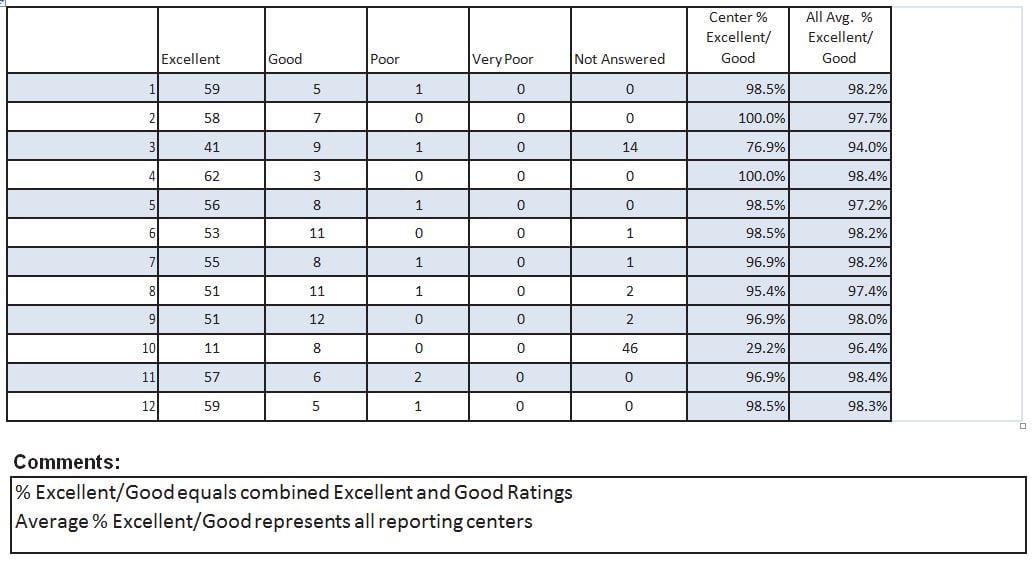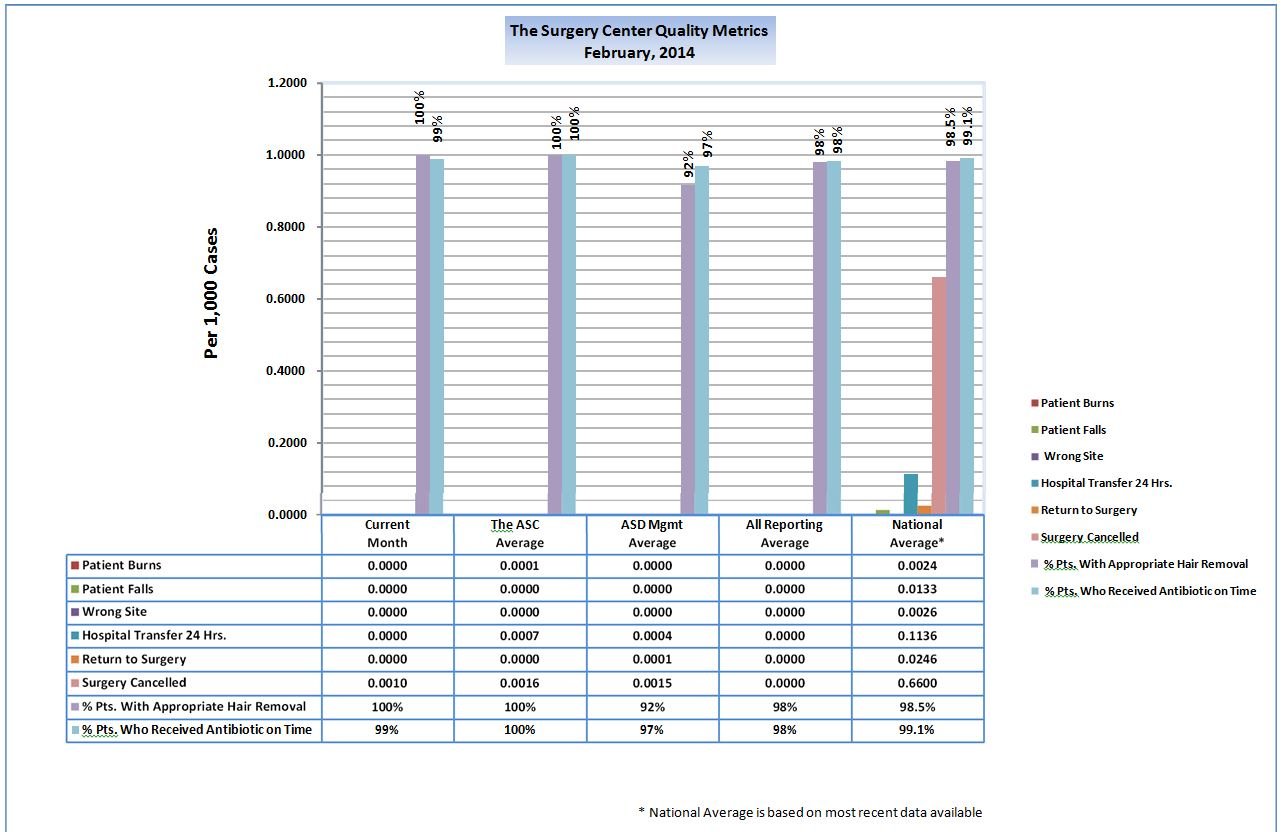 By Sandra Jones, Executive Vice President and COO of ASD Management
By Sandra Jones, Executive Vice President and COO of ASD Management
Benchmarking is a key tool for leading ASCs. Through benchmarking, your organization can focus on specific areas for improvement, and demonstrate your success.
Benchmarking enables you to:
- set measurable and realistic goals;
- alerts you to new practices;
- helps you evaluate your own processes;
- and increases accountability.
While accreditation and regulatory surveyors may focus on benchmarking clinical processes and outcomes, benchmarking also provides tools for financial success. Yet many are uncertain about how to implement benchmarking and how to use the information it provides.
What is benchmarking?
Benchmarking is an organized use of measurements that enable comparisons of an activity or process over time within an organization or an outside source. Organizations use benchmarking as a point of reference when comparing results in order to evaluate performance and identify opportunities for improvements. Facilities can benchmark activities, such as on-time administration of prophylactic IV antibiotics, outcomes, such as colon perforation, or financial data, such as days in A.R., front end collections, and cost of supplies by physician.
What are high-risk, high-volume areas that impact or could impact patient care? How are your expenses and revenue comparing to other facilities? How much can you improve? These are all questions that can be answered through identifying the correct metrics and setting an appropriate benchmark. If you are participating in ASCA benchmarking, you can review your individual report and identify areas where your performance is below average. You can review your G-code submissions and compare data month-to-month or quarter-to-quarter. Using FMQAIs annual report, you can assess your performance against other G-code reporting facilities. For financial success, key financial trends and comparison indicators can help you focus your expense control activities and managed care contracting.
Internal and External Benchmarking
Internal benchmarking can reveal organizational problems when variability exists in particular areas over time. For example, perhaps you ask the patient on your satisfaction survey if post-operative instructions were clear and complete. The latest results show a decrease in positive responses to the question. What has changed? Did you add a procedure or specialty? Did a physician practice change its post-operative orders? Did you have a change in personnel? What additional data do you need to find answers? Using internal benchmarking, your facility can focus its QAPI activities, alerting you to opportunities for improved performance. Through external benchmarking, you can compare your patient satisfaction questionnaire against other facilities, and select areas for improvement.
When comparing some external benchmarks, you may need additional information to determine if the two measures are the same (an apple to apples comparison). This may involve consulting several sources of information before identifying the correct external benchmark. You must be identifying and measuring the same metric on the same scale. For example, when comparing staff hours per case, you may want a breakdown of clinical and business hours since some facilities may outsource billing and collections. Many facilities outsource peripheral operations, such as maintenance, terminal cleaning, and daily housekeeping while others manage these activities in house. This additional information is essential to understanding your facility’s performance when compared to external benchmarks. Always keep in mind that benchmarking is a tool to evaluate performance and develop strategies for improvement, not an end result.
Benchmarking is a tool to evaluate performance and develop strategies for improvement, not an end result.
Another valuable source for external industry benchmarks are trade journals and articles. Surgery center focused publications provide data about compliance, patient outcomes, payroll expenses, supply costs, and other key indicators that allow you to compare your performance to others.
ASCs that operate as a part of a corporation or a management company often have access to the financial and quality data for all sister facilities. Among ASD Management facilities, we routinely compare G-codes, cancellation of cases, and patient satisfaction. Occasionally, we do specific data gathering such as cost of supplies for certain procedures, O.R. turnaround, and time in pre and post-operative areas. Every month we compare revenue per case, payroll per case, supply cost per case and other key financial indicators. Our benchmarks help us focus our analysis and concentrate our activities to achieve the best patient outcomes and financial results.
Onward and Upward
As mentioned earlier, data collection and benchmarking are not end results, but steps in the process of improved performance. Analyzing and evaluating the data to determine opportunities for improvement and creating and executing an actionable plan are the end results of benchmarking. You might find that your facility is performing at or above expectations and there is nothing to improve. If this is the case, document that you have reviewed the information, you have little or no room for improvement and you are directing your efforts elsewhere. CMS has stated that data collection and analysis are not enough, but must lead to performance improvement. Therefore, if you perform at the top of the industry consistently, seek other measurements that can lead to the discovery of best practices and improved outcomes.
...data collection and analysis are not enough; they must lead to performance improvement.
Let your staff and the surveyors know
Sometimes ASCs cannot articulate their benchmarking activities when surveyors ask about it. Your participation in G-code reporting is one way CMS is measuring your performance on specific quality measures. Have you reviewed and analyzed your own G code reporting? Comparison of complications published in journal articles and case cancellation after admission rates are examples of measures available. By keeping your staff informed and involved, they can help you find ideas.
Reporting your findings
Knowing where you stand on key performance metrics can help you allocate your resources to improving performance and outcomes while validating your results. Report your findings to your medical staff leadership and governing body. Show them where you stand in the industry. Regardless if you are a top performer or have substantial room for improvement, inform your management team. However, if you have room for improvement, come armed with specific suggestions for improvement.
Sandra Jones is Executive Vice President and COO of ASD Management, an ambulatory surgery center company. ASD Management redevelops existing ambulatory surgery centers, manages all phases of new developments, provides ambulatory surgery center management and performs ambulatory surgery center consulting. ASD Management operates throughout the U.S.
The following include two reports: one on quality measures, and one on patient satisfaction questionnaire responses.


















